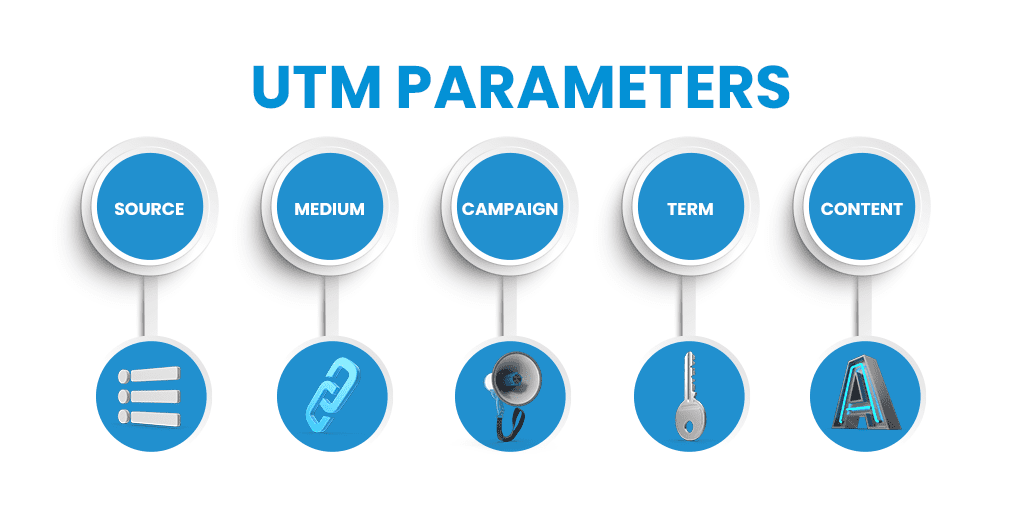Understanding what UTM parameters are
The Benefits of Creating Social Media Ad Campaigns That Use UTM Parameters
Blog Introduction: In the world of digital marketing, there are a lot of acronyms and jargon to keep track of. One such term is UTM parameters. UTM stands for “Urchin Tracking Module.” In layman’s terms, UTM parameters are tags that you can add to the end of a URL to track the source of the traffic to your website.
Why should you care about UTM parameters? Because they can be incredibly useful in helping you to understand where your website traffic is coming from and how effective your various marketing campaigns are. In this blog post, we’ll take a closer look at UTM parameters and how you can use them to create more effective social media ad campaigns.

UTM parameters are relatively simple social media tools that can help a social media manager better measure the effectiveness of their campaigns. By tagging links with UTM parameters, social media managers can see how many clicks they’re getting from each social media platform, what kind of traffic they’re receiving, and where their traffic is coming from. In short, UTM parameters provide social media managers with valuable insights that can help them improve their campaigns. While UTM parameters may seem like a small details, they can make a big difference in the success of social media campaigns.
UTM parameters are important for marketing because they allow you to track the effectiveness of your marketing campaigns. By using UTM parameters, you can see which campaigns are driving the most traffic to your website, and which ones are resulting in the most conversions. This information can help you to fine-tune your marketing efforts and make sure that your campaigns are as effective as possible.
What are UTMs?
As we mentioned above, UTMs are tags that you can add to the end of a URL in order to track the source of traffic to your website. When someone clicks on a link with UTMs, those UTMs are added to the URL as query parameters. Query parameters are pieces of information that are appended to the end of a URL. They provide additional information about a page or resource and help browsers and web servers communicate with each other. For example, let’s say that you’re running a social media ad campaign for your e-commerce store. You might want to use different UTMs for each social media platform that you’re using (e.g., Facebook, Twitter, Instagram) so that you can track which platform is driving the most traffic to your website. By adding UTMs to the end of your URLs, you can see exactly where people are coming from when they visit your site. To create a UTM, you simply need to add some extra information to the end of your URL. For example, let’s say that you want people who click on your Facebook ad to be redirected to https://www.example.com/product-page/. You would add ?utm_source=facebook&utm_medium=cpc&utm_campaign=spring_sale as query parameters to the end of this URL so that it looks like this: https://www.example.com/product-page/?utm_source=facebook&utm_medium=cpc&utm_campaign=spring_sale The different parts of a UTM are as follows:- Source: The source is the place where your traffic is coming from. In our example above, the source is Facebook. Other examples of sources include Google, Bing, Twitter, and LinkedIn.
- Medium: The medium is how people are finding your content (e.g., through paid ads, organic search results, social media posts). In our example above, the medium is CPC (cost per click). Other examples of Mediums include email and Banner Ads.
- Campaign: The campaign is what allows you to group together similar UTMs so that you can track their performance over time. In our example above, we’ve included “spring sale” as our campaign name since this particular ad campaign is for our spring sale event.
Now that we’ve covered what UTMs are and how they work, let’s take a look at some of the benefits of using them in your social media ad campaigns… One of the major advantages of using UTMs is that they allow you to collect much more data about your website visitors than if you weren’t using them..This data can be extremely valuable in helping you understand which platforms and campaigns are driving the most traffic (and sales) to your site so that you can adjust your marketing strategy accordingly and gain increased visibility into customer behavior. In addition to providing detailed data about where your website visitors are coming from, UTMs also give you insights into how these visitors interact with your site once they land on it. This type of data can be very helpful in identifying any issues with your website (ex: pages that take too long to load) so that you can address them accordingly as well as receive more effective reporting. UTM parameters make it much easier for businesses to track their marketing efforts and report on their ROI rather than having to manually keep track of all their different marketing activities. UTM-tagged links allow businesses to quickly see which campaigns are performing well (and which ones aren’t) so that they can adjust their budgets accordingly. As you can see, there are many benefits associated with using UTM parameters in social media ad campaigns. If you’re not currently using UTMs in your social media advertising efforts, we highly recommend doing so as they can provide valuable insights into customer behavior and help improve your overall marketing strategy. Happy tagging!




